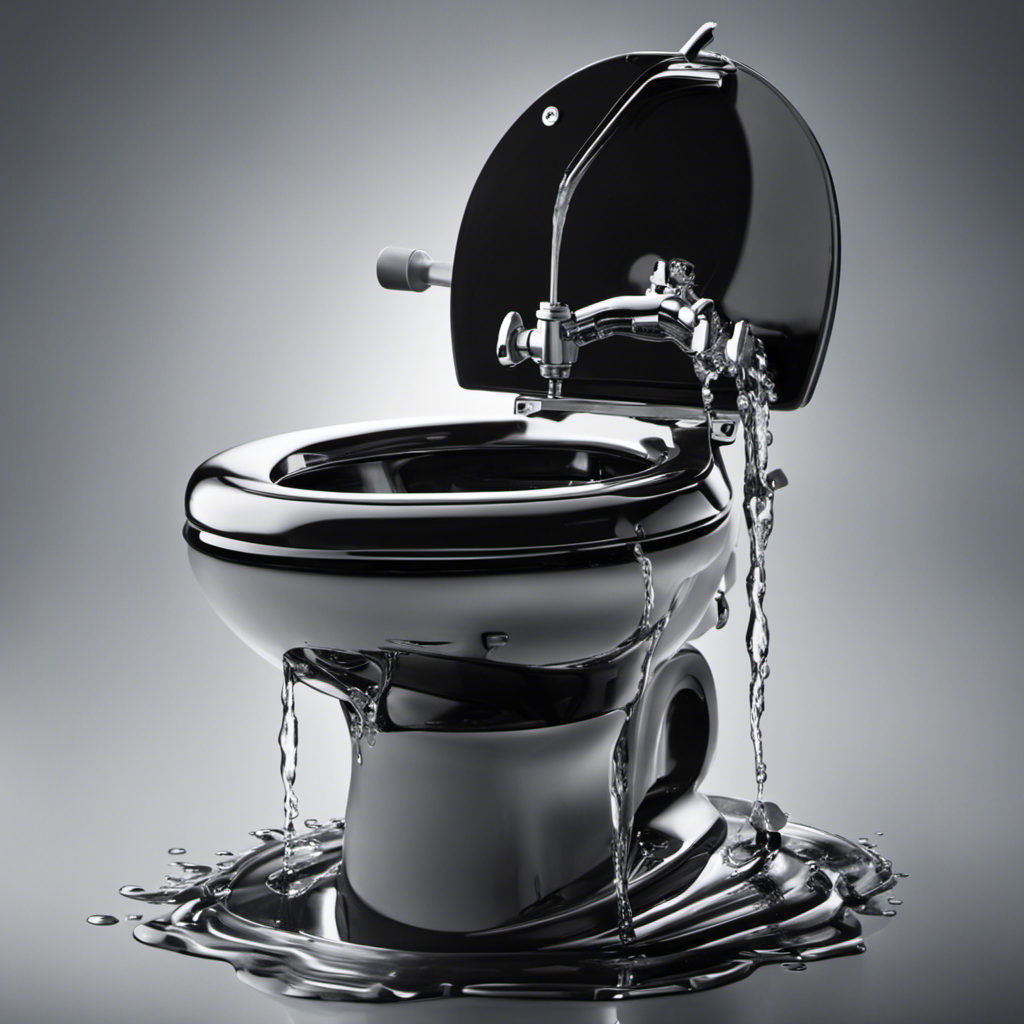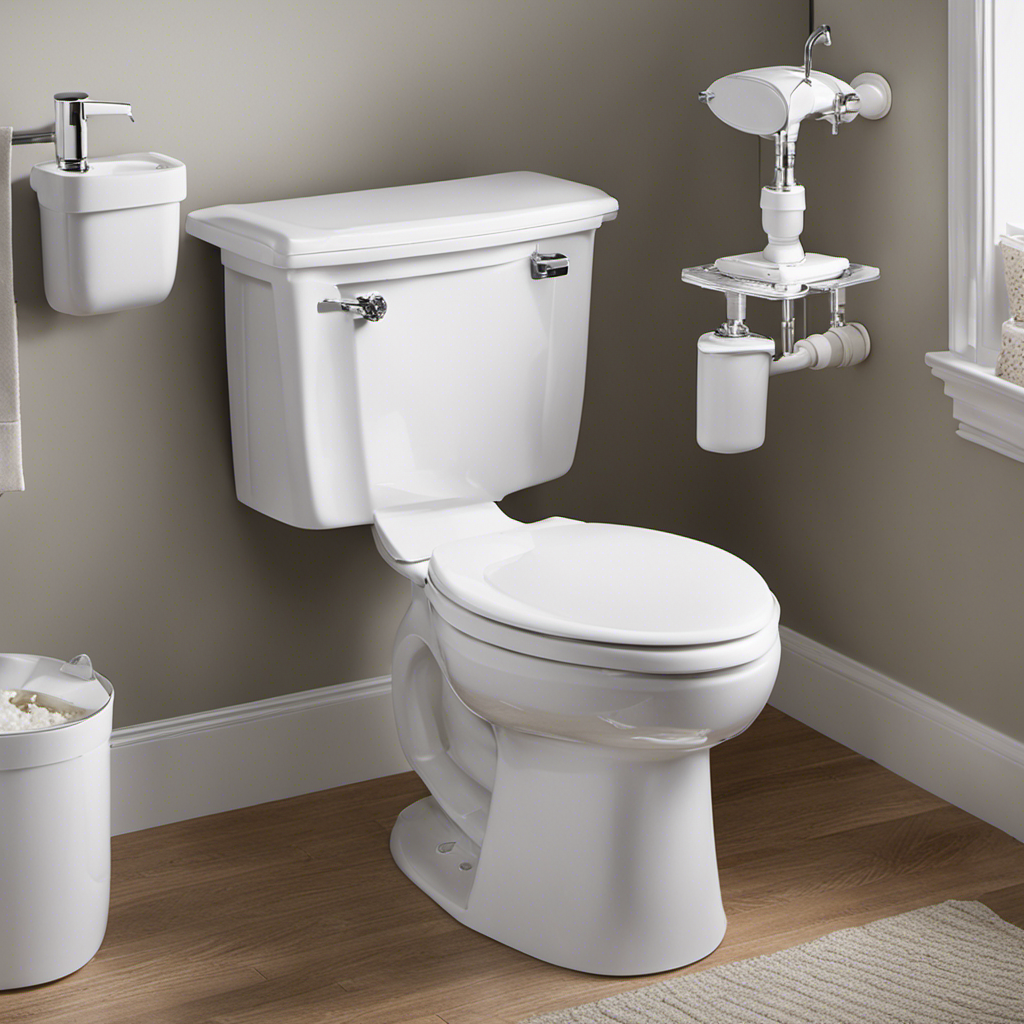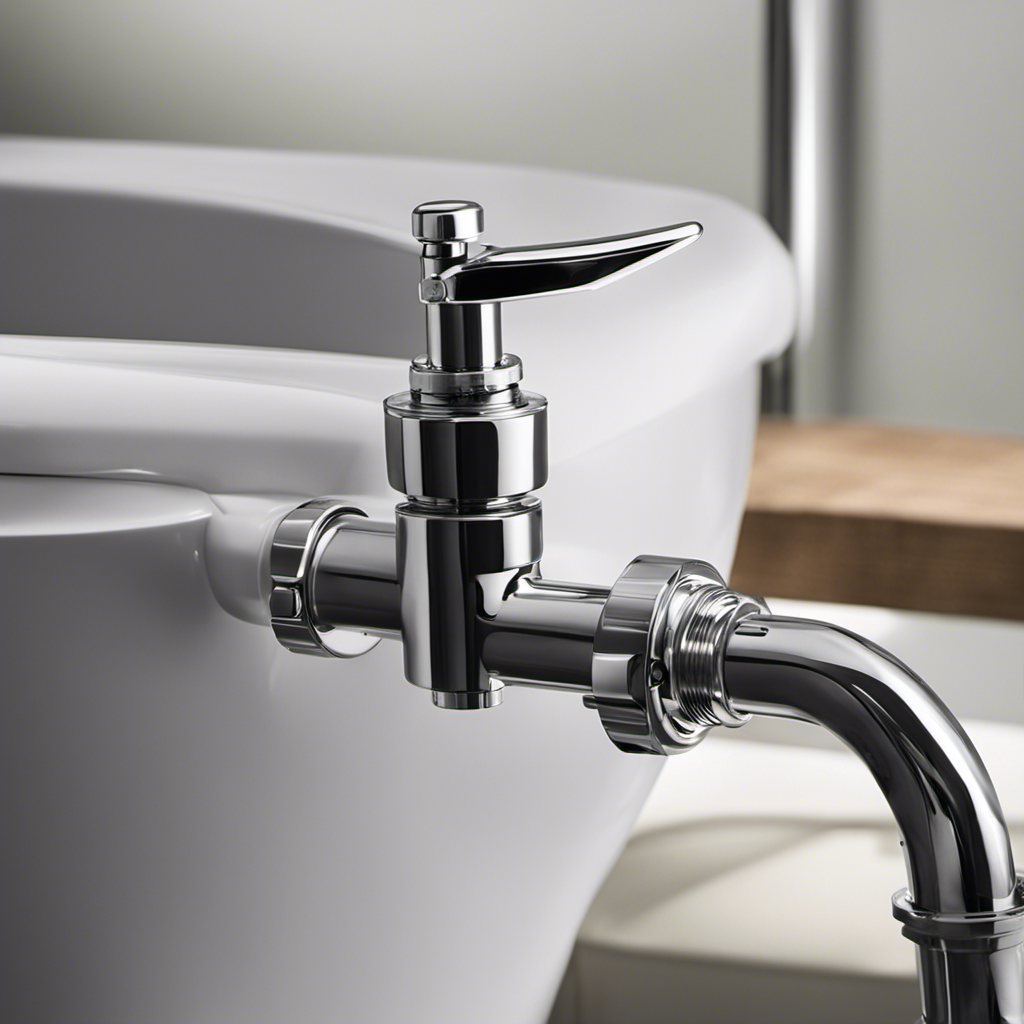Hey there! Ever had a running toilet that just won’t quit? Well, I’ve been there too, and let me tell you, it’s not fun.
But don’t worry, because I’ve got your back. In this article, I’m going to walk you through the step-by-step process of fixing a running toilet.
From identifying the common causes to troubleshooting persistent leaks, I’ll cover it all.
So grab your tools and let’s get started on putting an end to that annoying running toilet once and for all.
Key Takeaways
- The common causes of a running toilet include a worn-out or improperly sealing flapper and continuous water running into the toilet bowl.
- To fix a running toilet, you will need tools such as a toilet repair kit, wrench, pliers, and screwdriver. The steps for flapper replacement include turning off the water supply, flushing to drain the tank, removing the old flapper, and installing a new one.
- If you are not comfortable with DIY repair, consider calling a professional plumber to ensure correct and efficient repair.
- Troubleshooting tips for persistent toilet leaks include checking the water supply line, adjusting or replacing the fill valve, addressing water stains or puddles around the base of the toilet, and testing and cleaning or replacing the flapper if necessary.
Common Causes of a Running Toilet
One of the most common causes of a running toilet is a worn-out or improperly sealing flapper. This can result in water continuously running into the toilet bowl. Not only does this waste water, but it can also increase your water bill.
Signs of a faulty toilet include hearing water running even when the toilet hasn’t been flushed, a longer-than-usual refill time after flushing, or a constant hissing sound.
Fixing a running toilet is a relatively simple task that can save you from expensive toilet repair costs. In the next section, I will discuss the tools and supplies you may need to fix the flapper.
Tools and Supplies Needed for Toilet Repair
To repair a toilet, you’ll need some tools and supplies. One essential tool is a toilet repair kit, which typically includes a fill valve, a flapper, and a flush valve. These kits come with detailed instructions on how to replace these parts.
Additionally, you may need a wrench, pliers, and a screwdriver to remove and install the various components.
When it comes to toilet flapper replacement, you’ll need to turn off the water supply to the toilet, flush to drain the tank, and then remove the old flapper. Install the new flapper according to the instructions provided in the repair kit.
Remember to turn the water supply back on and check for any leaks once you’re done.
With the right tools and supplies, repairing a toilet can be a simple and cost-effective task.
Step-by-Step Guide to Fixing a Running Toilet
If you’re experiencing a constantly flowing toilet, start by turning off the water supply valve behind the toilet. This will stop the water from continuously filling the tank.
Next, remove the tank lid and check the flapper. If it’s worn or damaged, replace it with a new one. You can find flappers at your local hardware store for a reasonable price.
If the flapper is fine, check the fill valve and adjust it if needed. Sometimes, a simple adjustment can fix the issue.
If you’re not comfortable fixing the toilet yourself, it’s best to call in a professional plumber. Toilet repair costs can vary depending on the extent of the problem, but professional plumbing services are worth it to ensure the job is done correctly and efficiently.
Troubleshooting Tips for Persistent Toilet Leaks
You can troubleshoot persistent toilet leaks by checking the water supply line for any leaks or loose connections. It is important to address these issues promptly to avoid water waste and potential damage to your bathroom. To assist you in detecting and repairing toilet leaks, here are some practical tips:
| Toilet Leak Detection | DIY Toilet Repair |
|---|---|
| Listen for continuous running water | Adjust the fill valve or replace it if necessary |
| Check for water stains or puddles around the base of the toilet | Replace the wax ring or tighten the bolts |
| Test the flapper for proper sealing | Clean or replace the flapper if it is worn out |
Preventive Measures to Avoid Toilet Running Issues
Consider implementing these preventive measures to ensure your toilet does not experience any issues with constant water flow. Here are three water conservation measures you can take to maintain your toilet effectively:
-
Check for leaks: Regularly inspect your toilet for any leaks. A simple way to do this is by placing a few drops of food coloring in the tank and waiting for 10 minutes. If the water in the bowl changes color, you have a leak that needs to be fixed.
-
Adjust the water level: If your toilet tank is constantly overflowing, adjusting the water level can help. Locate the water level adjustment screw or float valve and adjust it to the appropriate level. This will prevent excess water from flowing into the bowl.
-
Clean the flush valve: Over time, mineral deposits and debris can accumulate on the flush valve, causing it to stick and result in constant water flow. Regularly clean the flush valve to ensure it operates smoothly and efficiently.
Frequently Asked Questions
Can I Use Household Items as a Temporary Fix for a Running Toilet?
Yes, you can use common household items as a temporary fix for a running toilet. There are simple solutions like adjusting the flapper or using a rubber band to stop the water flow.
How Do I Know if I Need to Replace the Flapper in My Toilet?
Replacing the flapper is crucial for toilet repair. If your toilet keeps running, it might be a sign that the flapper is worn out or damaged. I’ll show you how to identify and replace it.
Are There Any Health Risks Associated With a Running Toilet?
Running toilets can lead to health risks and water wastage. It’s important to address the issue promptly. Toilet repair services can fix the problem and prevent potential damage. Don’t ignore a running toilet!
Can a Running Toilet Cause a High Water Bill?
A running toilet can cause a high water bill due to its constant flow. To avoid this, it’s important to fix the issue promptly. Implementing water conservation measures can also help reduce overall usage and save money.
What Should I Do if My Toilet Continues to Run After I’ve Tried All the Troubleshooting Tips?
If my toilet continues to run after troubleshooting, I will consider a flush valve replacement or adjusting the water level. These steps can fix the issue and prevent further water wastage.
Conclusion
So there you have it, a step-by-step guide on how to fix a running toilet.
I know what you might be thinking – this seems like a lot of work and maybe I should just call a plumber. But trust me, with the right tools and supplies, and a little bit of patience, you can easily fix this issue yourself.
Plus, think about the money you’ll save by not having to pay for a professional.
So go ahead, give it a try and become your own handyman!










